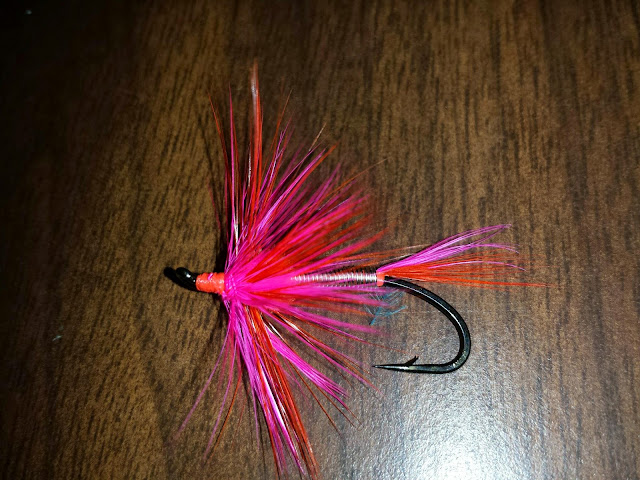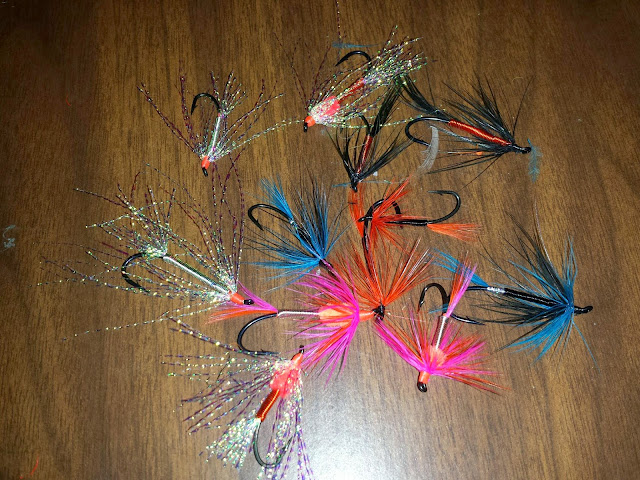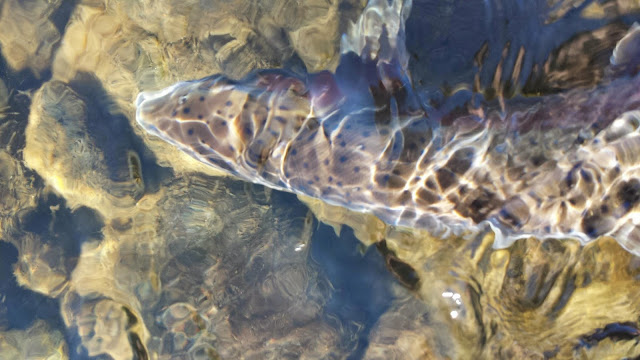The slight tug told me there was a fish in the emerald
depths, but the abrupt slack left me burning for a better setup. I was around
14 at the time, and just as enthused about steelhead as I am today, but the
fish came way harder back then then they do now. Just the gear alone made a day
on the river exhausting to a 120lb 14 year old. Spending the day throwing a
honey yellow 9wt Lamiglas was enough to tear off anyone’s arm, but add some
mono and lead core and your just asking for trouble. Standing in the river was
just as bad in those days--I could never afford the fancy new neoprene
waders so I was stuck with the good ole heat sapping latex Sealdri's. To lose a
steelhead back then proved to be far more disappointing than today to say
the least. We never caught many, so to lose one meant weeks’ worth of work, and
more than 1000 cast. I almost gave the sport up completely until a good friend
of mine introduced me to a book titled Dry Line Steelhead and Other Subjects
written by Bill McMillan. This book was a revelation for me, and my buddy Jim Newton,
as we were looking for any way to stop throwing the old chuck and duck. It just
made sense to use a floating line, long leader, and heavy fly, but the hooks we
relied on to plunge feathered offering through the chilled currents were so
thick and dull that hooksets became a major issue; So much so, that I searched
for another way.
The Wired Flies became the answer to my epic fly journey. I
could fish a regular wired hook, taking advantages of its sharp needle like
point, yet maintain the weight and profile I knew would induce a strike. I
tried the whole dubbing and chenille over led wire bit, but I lost the profile
I was used to—so back to the drawing board. The search for the
Holy Grail of patterns, ended for me when I started making my bodies out of
wire. I discovered it by accident. I had run out of lead wire, so I wrapped the
biggest copper wire I could find on the hook then decided it looked too good to
cover. I almost forgot about the fly until a boat in front of me was saying
fish on copper colored hot shots. As luck would have it the wired copper fly I had
tied that spring was the only fly I had of that color, so I tied it on halfheartedly,
and fished it. Within a few minutes I
was hooked up.
I was only after the weight inducing aspect of the wire, but
after using them for years I found wired body flies to have a several qualities
that I never banked on.
1.
They allowed me to fish several different
depths. With one fly, I could cover the whole run from top to bottom. Half hitch
the head and the fly would skate, throw a couple of mends on top of it and it
will dead drift the bottom. Throw less aggressive
mends and you can swim it through your favorite mid strata lie.
2.
They are extremely durable, a property that
comes in handy when you have hit the mother load, or have been bouncing your
offering across the stone ridden steelhead seams.
3.
With all the wire colors out there you can cover
any fishing condition known to man.
The next time you sit down to tie some steelhead patterns,
whip out some Uni and give it a try, I bet you ask yourself why you didn’t fish
wired flies before.
 |
| Great profile with all the weight you need |
 |
|
My wired flies have progressed a long ways from the first
copper that hit my box.
|
 |
| Fish are a bit easier to come by nowadays. |

Any recommended recipes to try? I would love to try tying a few of these!
ReplyDeleteGreg, I'll tie some and post them here ...stay tuned
DeleteGreat, thanks!
ReplyDelete